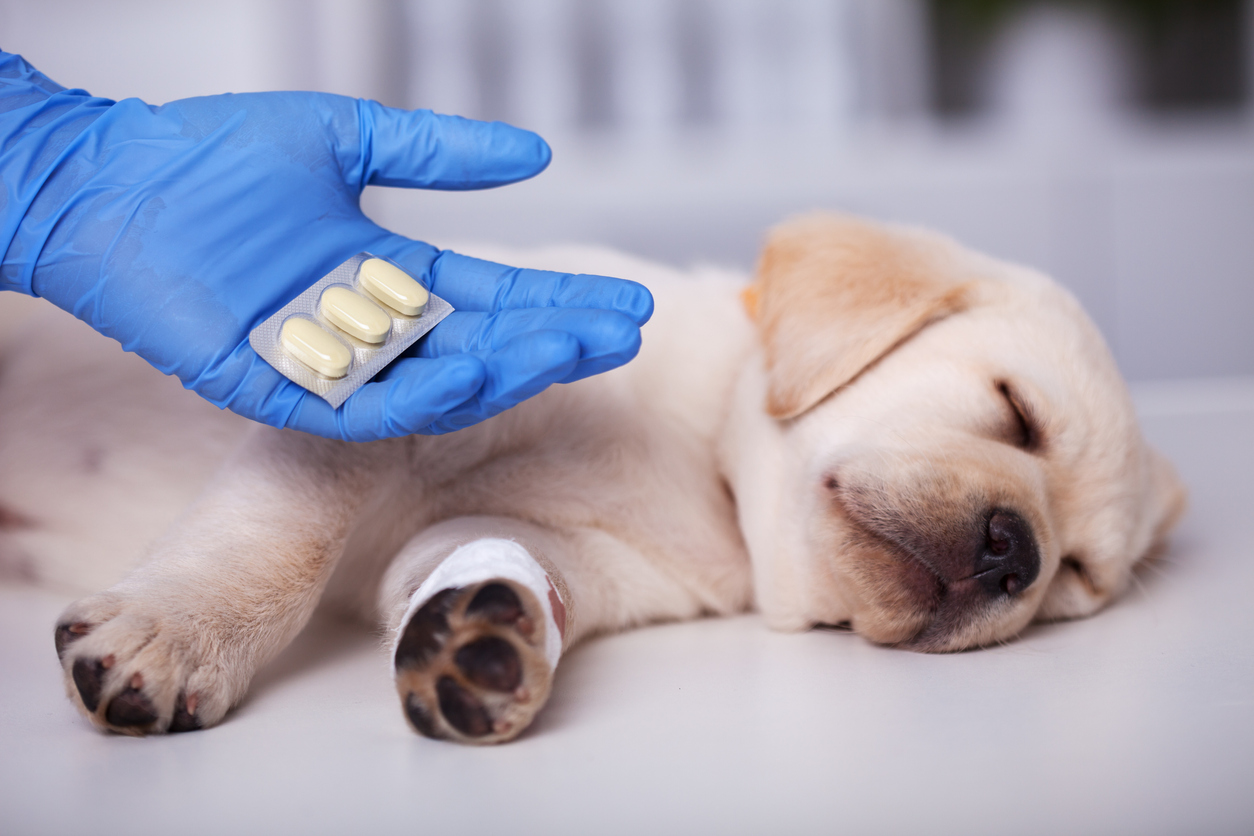
No matter how good you and your staff may be, or how attentive your clients are, mistakes happen with medication. Mix ups and dosage errors are common, but a combination of good labeling practices and good communication can help keep these errors down. These tips will help you reduce common medication labeling mistakes so that your patients get the medicine they need when they need it.
Unclear Dosing Instructions
Unintentional overdoses are the leading cause of emergency visits for both pets and humans. Pain killers, anticoagulants and insulin are the most common drugs involved in these overdoes. Most of these stem from unclear instructions.
If you’re supposed to give a pill to your pet once per day, when do you feed it to him? In the morning? At night? Does it matter? As a medical professional, you know that “once per day” means “once per day at the same time every day.” However, that’s not always clear to clients, and they’re more likely to administer medications to their pets when it’s most convenient from day to day.
To avoid these problems, human and animal clinics alike are adopting the Universal Medication Schedule. Instead of “twice per day,” a UMS instruction is more specific: “1 pill in the morning and 1 pill in the evening.” Often, hour ranges are included, separating the day into clear segments including morning, noon, evening, and night.
Using these standardized terms also makes it easier for the pharmacy to translate the label to different languages. By eliminating ambiguity from the outset, the client will get clear instructions in their native language.
Drug Confusion
With their similar names and widely varying release mechanisms and concentrations, opioids are the most confusing drugs to handle. It should be no surprise that mistakes are common in clinics where these medications are stored together in a single cabinet.
Always double check high risk medications before administering them. Both the physician requesting the drug and the nurse administering the drug should always confirm the medication, dosage, and method of administration before the drug is used. Consider adopting multi-color labels and labeling syringes to eliminate confusion during procedures.
It’s easy for both the pharmacist and the patient to mix up similar sounding drugs like cyclophosphamide and cyclosporine. Using both the brand name and the generic name on prescriptions and prescription labels gives the pharmacist and patient a way to double check the medicine.
Prescriptions filled at your clinic may have clear English on the label, but it’s common for outside pharmacies to copy instructions verbatim. When writing a prescription, use English instead of Latin abbreviations.
Go Over Drug Interactions
Drug interaction information can’t fit on the label, so it’s included on the leaflet handed out with the medication. Clients seldom look at these leaflets, which makes interactions easy to miss. Discussing interactions at the clinic before the client goes home can prevent these issues.
Make Client-Focused Prescription Labels
Label designs tend to focus on the information the pharmacy needs, not the client. In one study, a basic ibuprofen prescription was requested from 85 pharmacies. Across the board, label designs were found to emphasize text that was important to the pharmacy, rather than the person using the medication. The largest space was used to identify the pharmacy, followed by instructions, the medicine name and, at less than half the size of the pharmacy name, warning information. Moreover, independent pharmacies were far less likely to add brightly colored warning stickers, making it easy for clients to overlook this information.
When deciding on a layout for your veterinary labels and stickers, highlight warnings and give the biggest space to instructions and other drug information. This makes the label easier to read and draws attention to information that is important to the client.
Other Ways to Improve Client Compliance
If you offer prescription medications at your clinic, include and encourage the use of a dosage syringe with liquid drugs. If the medicine tastes good to the pet, the client is more likely to grab a spoon from their silverware drawer when they dispense a dose. Flatware sizes vary widely, which means a teaspoon or tablespoon doesn’t actually hold a teaspoon or tablespoon.
Animal prescriptions aren’t stored as carefully as human medications, especially if they’re for horses or livestock. Adding a shield to the label ensures the instructions will be readable after being stored in mud rooms, barns, or sheds.
We Make It Easy to Get Clear Medication Labels
Positive Impressions, LLC makes it easy to get veterinary prescription labels that fit the needs of your patients. Our Label Wizard can walk you through designs to make a custom print with your clinic information that will work with your labeling equipment. We also offer veterinary warning labels that can be added to point out side effects and other issues. Be sure to check out our latest specials on our website.
